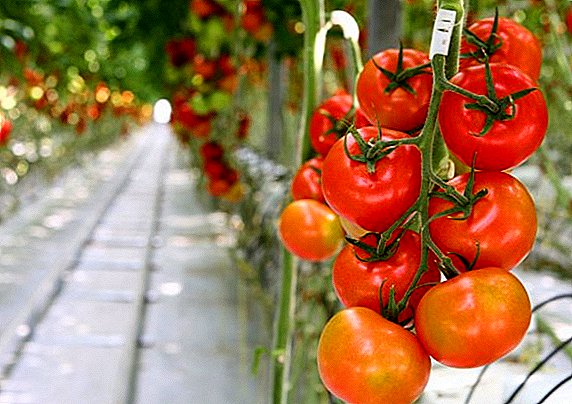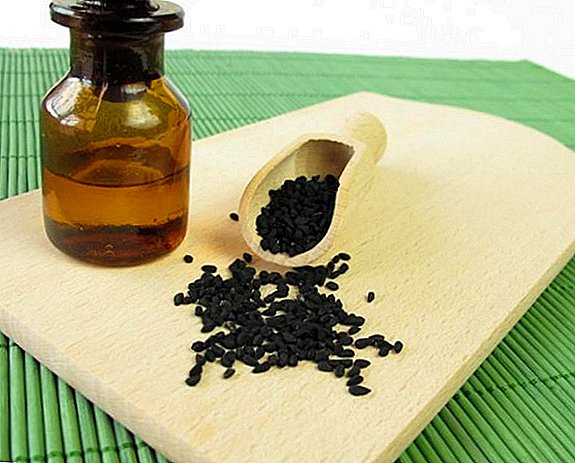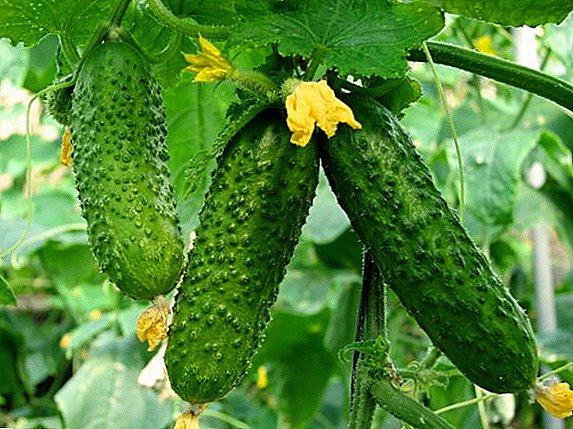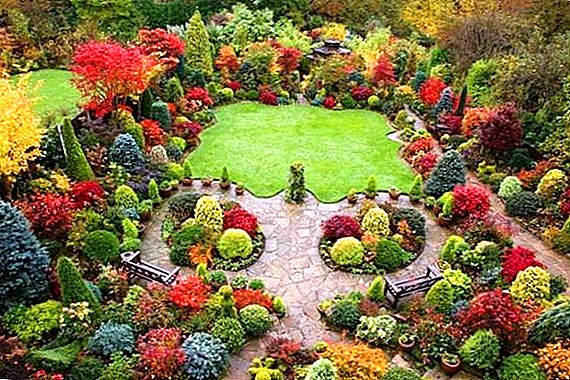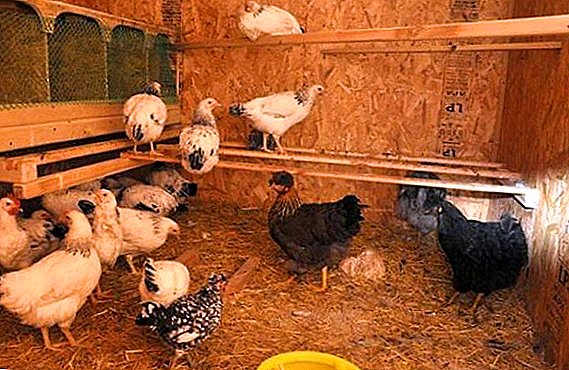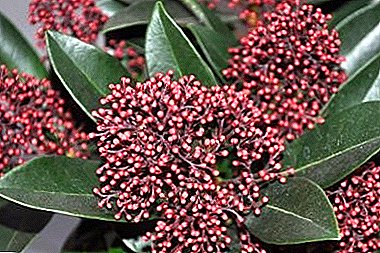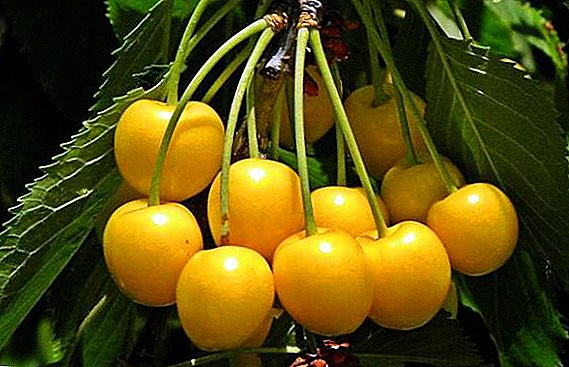 Today, lovers of juicy deep red and blue-purple cherries can enjoy the unforgettable taste of their fellows - yellow berries.
Today, lovers of juicy deep red and blue-purple cherries can enjoy the unforgettable taste of their fellows - yellow berries.
There are many varieties of yellow-fruit tree, therefore we will consider one of the most popular ones - Chermashna sweet cherry. Consider the main characteristics of the dessert variety, and also find out how this sweet cherry managed to win the location of experienced gardeners.
Selection
The variety "Chermashnaya" was bred by A. Yevstratov at the All-Russian Breeding and Technological Institute (VSTISP) and is a direct descendant of the "Leningrad Yellow". It belongs to the early ripening varieties that ripen simultaneously with strawberries.
Did you know? In the genus of cherry trees, there are real giants, reaching a height of 25-30 m.
Tree description
According to the description, Chermashnaya sweet cherry variety belongs to trees of medium height. So, its dimensions reach 4-5 meters. The tree has a rounded oval crown. Skeletal branches, covered with small, lanceolate, long-pointed, glossy foliage of green color, depart from the trunk. 
Fruit Description
The fruits of cherry trees have an average size - up to 4.5 g. They are round in shape, with a rich yellow base and bright yellow coat color.
By taste, the berries do not differ from their red-sided counterparts, since they are equally sweet and have a barely perceptible sourness. Juicy yellow flesh is easily separated from the small bone.
Familiarize yourself with the cultivation of the cultivation of cherries such as Ovstuzhenka, Revna, Krupnoplodnaya, Valeriy Chkalov, Regina, Bullish Heart, Diber Black.

Pollination
Chermashnaya, a favorite with many cherries, is a self-productive species, therefore it needs pollinators of the variety. The function of such are fruitful species "Krymskaya", "Fatezh", "Bryansk Pink". They are used for cross-pollination, planted next to the cherry tree, improving its ovary.
Fruiting
The yellow-fruited tree ripens early and begins to gradually bear fruit from the age of three or four. Peak fruiting comes at six or seven years of age.
Then the harvest from one tree can be up to 12 kg. The harvest from older specimens with age will only increase, reaching a maximum limit of 25-30 kg of berries per tree.
Did you know? Ripe berries of sweet cherry are raw materials for the manufacture of food dyes. Surprise is the fact that they do not receive different shades of red, but a rich green color.
Flowering period
Y "Chermashnoy" flowering period begins before the leafing: from the end of April or the beginning of May. 
Gestation period
Since "Merry" is an early variety, the period of fruit ripening comes early: from the beginning of June and by the end of the month. Berries ripen unevenly, in several stages.
Did you know? "Bird Cherry" - one of the famous informal names of sweet cherries. Obviously, it is associated with the love of birds for this delicacy. At the end of the summer, you can witness a picture when a flock of birds sticks to a tree and eats ripe fruit with pleasure.
Yield
"Chermashnaya" has remarkable yields. According to estimates, the average annual yield per hectare is from 85 kg. Due to the non-simultaneous ripening of berries, harvesting has to be carried out several times per season.
Transportability
Berries varieties are transportable. They can be transported both at close and long distances. The main thing - to organize the harvest, intended for transportation, in dry weather and tear off berries together with a tail.
Next, the collected cherries are packaged in wooden containers of 5 kg and carry out transportation. 
Resistance to environmental conditions and diseases
The variety feels great in the middle belt of the mainland. Due to these properties, trees are actively planted in the north of Ukraine, in Russia and Belarus. The survival rate of the variety is good, as is the resistance to slight frost.
"Chermashnaya" rarely affects moniliasis or coccomycosis, however, like other diseases. High resistance of this species to pests can be disturbed by weather conditions. So, in the hot dry summer the tree becomes attractive for leaf-eating pests.
Winter hardiness
Cherry wood endures cold winters with moderate frosts. But the flower buds show the average level of winter hardiness.
Important! To increase the frost resistance of the tree during the growing season, it is necessary to satisfy all its needs for nutrition and watering, as well as for lighting.

Fruit use
Dessert berries are consumed fresh, as well as used for making blanks for the winter. In its original form, the fruits contain many trace elements and vitamins A, B, C, which are lost during various treatments.
It is best to use fresh berries, because they are not only tasty, but also healthy. And to enjoy the taste of juicy fruits a little longer, it is best to freeze them. In this form, sweet cherry can be stored for 3-4 months.
Advantages and disadvantages
Each type of sweet cherry has its pros and cons, and the yellow fruit variety is no exception.
pros
The main advantages of "Chermashnoy":
- early maturation;
- precocity;
- high yields;
- resistance to environmental conditions, cold winters, fungi and pests.
Important! The benefits of sweet cherry are invaluable for the body, because these ripe berries stimulate the immune system, have a beneficial effect on the state of the gastrointestinal tract and kidneys, reduce the level of cholesterol in the body.
Minuses
The main disadvantages of the variety are self-infertility and the fact that with an excess of moisture the fruits begin to crack. As you can see, the merits of Chermashna allow you to close your eyes to its minor flaws, which are easy to handle.
In addition, the variety is considered a universal pollinator for many species of cherry trees, from which your garden will only benefit.


